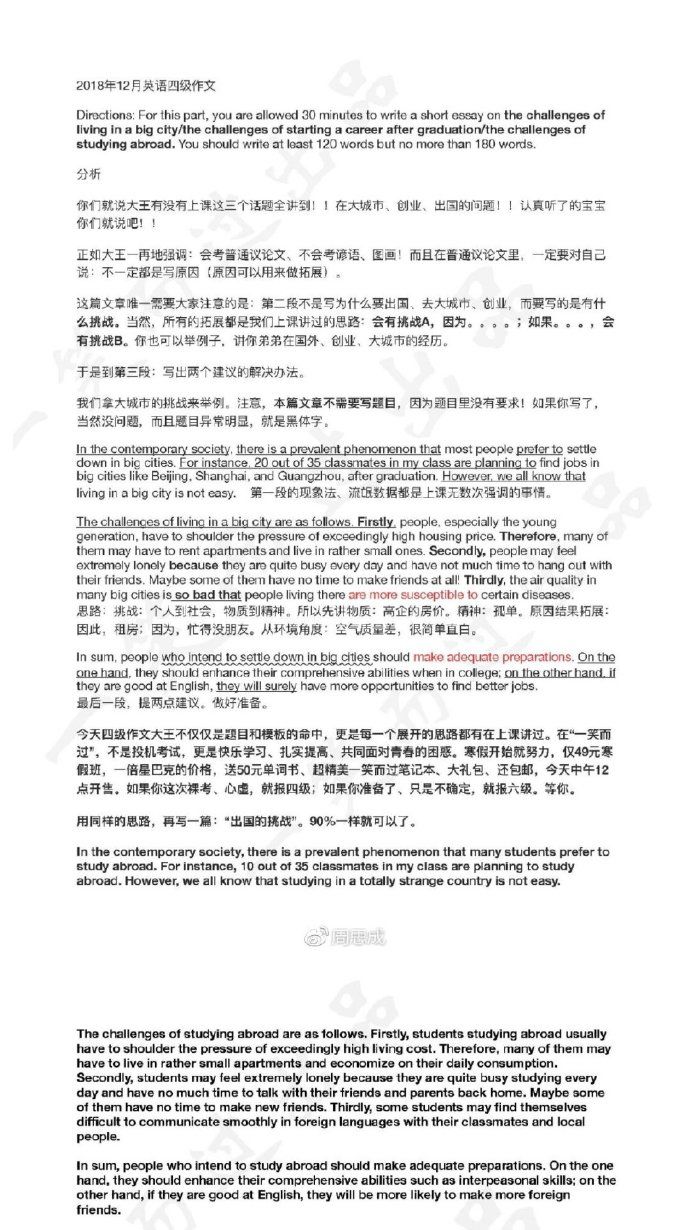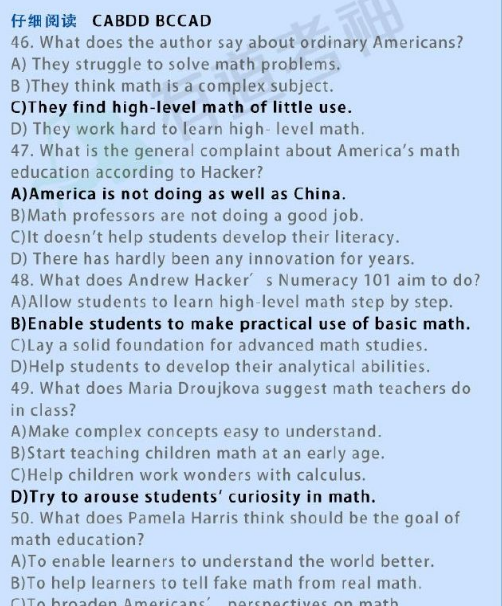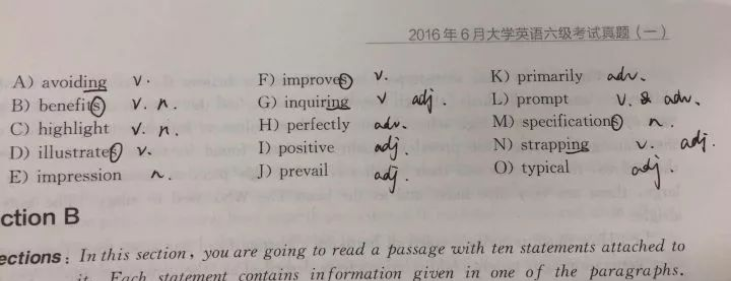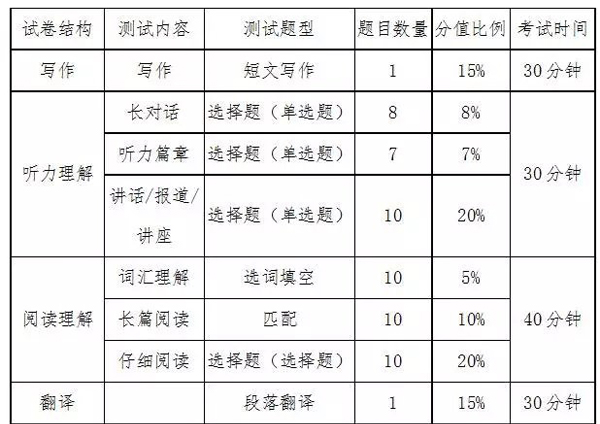2014考研英语一阅读理解密押模拟题
|
Text 1 The majority of successful senior managers do not closely follow the classical rational model of first clarifying goals, assessing the problem, formulating options, estimating likelihoods of success, making a decision, and only then taking action to implement the decision. Rather, in their day-by-day tactical maneuvers, these senior executives rely on what is vaguely termed intuition to manage a network of interrelated problems that require them to deal with ambiguity, inconsistency, novelty, and surprise; and to integrate action into the process of thinking. Generations of writers on management have recognized that some practicing managers rely heavily on intuition. In general, however, such writers display a poor grasp of what intuition is. Some see it as the opposite of rationality; others view it as an excuse for capriciousness. Isenberg's recent research on the cognitive processes of senior managers reveals that managers' intuition is neither of these. Rather, senior managers use intuition in at least five distinct ways. First, they intuitively sense when a problem exists. Second, managers rely on intuition to perform well-learned behavior patterns rapidly. This intuition is not arbitrary or irrational, but is based on years of painstaking practice and hands-on experience that build skills. A third function of intuition is to synthesize isolated bits of data and practice into an integrated picture, often in an Aha! experience. Fourth, some managers use intuition as a check on the results of more rational analysis. Most senior executives are familiar with the formal decision analysis models and tools, and those who use such systematic methods for reaching decisions are occasionally leery of solutions suggested by these methods which run counter to their sense of the correct course of action. Finally, managers can use intuition to bypass in-depth analysis and move rapidly to engender a plausible solution. Used in this way, intuition is an almost instantaneous cognitive process in which a manager recognizes familiar patterns. One of the implications of the intuitive style of executive management is that thinking is inseparable from acting. Since managers often know what is right before they can analyze and explain it, they frequently act first and explain later. Analysis is inextricably tied to action in thinking/acting cycles, in which managers develop thoughts about their companies and organizations not by analyzing a problematic situation and then acting, but by acting and analyzing in close concert. Given the great uncertainty of many of the management issues that they face, senior managers often instigate a course of action simply to learn more about an issue. They then use the results of the action to develop a more complete understanding of the issue. One implication of thinking/acting cycles is that action is often part of defining the problem, not just of implementing the solution. 1. According to the text, senior managers use intuition in all of the following ways EXCEPT to [A] speed up of the creation of a solution to a problem. [B] identify a problem. [C] bring together disparate facts. [D] stipulate clear goals. 2. The text suggests which of the following about the writers on management mentioned in line 1, paragraph 2? [A] They have criticized managers for not following the classical rational model of decision analysis. [B] They have not based their analyses on a sufficiently large sample of actual managers. [C] They have relied in drawing their conclusions on what managers say rather than on what managers do. [D] They have misunderstood how managers use intuition in making business decisions. 3. It can be inferred from the text that which of the following would most probably be one major difference in behavior between Manager X, who uses intuition to reach decisions, and Manager Y, who uses only formal decision analysis? [A] Manager X analyzes first and then acts; Manager Y does not. [B] Manager X checks possible solutions to a problem by systematic analysis; Manager Y does not. [C] Manager X takes action in order to arrive at the solution to a problem; Manager Y does not. [D] Manager Y draws on years of hands-on experience in creating a solution to a problem; Manager X does not. 4. The text provides support for which of the following statements? [A] Managers who rely on intuition are more successful than those who rely on formal decision analysis. [B] Managers cannot justify their intuitive decisions. [C] Managers’ intuition works contrary to their rational and analytical skills. [D] Intuition enables managers to employ their practical experience more efficiently. 5. Which of the following best describes the organization of the first paragraph of the text? [A] An assertion is made and a specific supporting example is given. [B] A conventional model is dismissed and an alternative introduced. [C] The results of recent research are introduced and summarized. [D] Two opposing points of view are presented and evaluated. Text 2 Roger Rosenblatt’s book Black Fiction, in attempting to apply literary rather than sociopolitical criteria to its subject, successfully alters the approach taken by most previous studies. As Rosenblatt notes, criticism of Black writing has often served as a pretext for expounding on Black history. Addison Gayle’s recent work, for example, judges the value of Black fiction by overtly political standards, rating each work according to the notions of Black identity which it propounds. Although fiction assuredly springs from political circumstances,its authors react to those circumstances in ways other than ideological, and talking about novels and stories primarily as instruments of ideology circumvents much of the fictional enterprise. Rosenblatt’s literary analysis discloses affinities and connections among works of Black fiction which solely political studies have overlooked or ignored. Writing acceptable criticism of Black fiction, however, presupposes giving satisfactory answers to a number of questions. First of all, is there a sufficient reason, other than the facial identity of the authors, to group together works by Black authors?Second, how does Black fiction make itself distinct from other modern fiction with which it is largely contemporaneous? Rosenblatt shows that Black fiction constitutes a distinct body of writing that has an identifiable, coherent literary tradition. Looking at novels written by Black over the last eighty years, he discovers recurring concerns and designs independent of chronology. These structures are thematic, and they spring, not surprisingly, from the central fact that the Black characters in these novels exist in a predominantly white culture, whether they try to conform to that culture or rebel against it. Black Fiction does leave some aesthetic questions open. Rosenblatt’s thematic analysis permits considerable objectivity; he even explicitly states that it is not his intention to judge the merit of the various works — yet his reluctance seems misplaced, especially since an attempt to appraise might have led to interesting results. For instance, some of the novels appear to be structurally diffuse. Is this a defect, or are the authors working out of, or trying to forge, a different kind of aesthetic? In addition, the style of some Black novels, like Jean Toomer’s Cane, verges on expressionism or surrealism; does this technique provide a counterpoint to the prevalent theme that portrays the fate against which Black heroes are pitted, a theme usually conveyed by more naturalistic modes of expression? In spite of such omissions, what Rosenblatt does include in his discussion makes for an astute and worthwhile study. Black Fiction surveys a wide variety of novels, bringing to our attention in the process some fascinating and little-known works like James Weldon Johnson’s Autobiography of an Ex-Colored Man. Its argument is tightly constructed, and its forthright, lucid style exemplifies levelheaded and penetrating criticism. 1.The author of the text is primarily concerned with __________. [A] evaluating the soundness of a work of criticism. [B] comparing various critical approaches to a subject. [C] discussing the limitations of a particular kind of criticism. [D] summarizing the major points made in a work of criticism. 2.The author of the text believes that Black Fiction would have been improved had Rosenblatt __________. [A] evaluated more carefully the ideological and historical aspects of Black fiction. [B] attempted to be more objective in his approach to novels and stories by Black authors. [C] explored in greater detail the recurrent thematic concerns of Black fiction throughout its history. [D] assessed the relative literary merit of the novels he analyzes thematically. 3.The author’s discussion of Black Fiction can be best described as __________. [A] pedantic and contentious. [B] critical but admiring. [C] ironic and deprecating. [D] argumentative but unfocused. 4.The author of the text employs all of the following in the discussion of Rosenblatt’s book EXCEPT: __________. [A] rhetorical questions. [B] specific examples. [C] comparison and contrast. [D] definition of terms. 5.The author of the text refers to James Weldon Johnson’s Autobiography of an Ex-Colored Man most probably in order to __________. [A] point out affinities between Rosenblatt’s method of thematic analysis and earlier criticism. [B] clarify the point about expressionistic style made earlier in the passage. [C] qualify the assessment of Rosenblatt’s book made in the first paragraph of the passage. [D] give a specific example of one of the accomplishments of Rosenblatt’s work. Text 3 Proponents of different jazz styles have always argued that their predecessor’s musical style did not include essential characteristics that define jazz as jazz. Thus, 1940''s swing was belittled by beboppers of the 1950''s who were themselves attacked by free jazzes of the 1960''s. The neoboppers of the 1980''s and 1990''s attacked almost everybody else. The titanic figure of Black saxophonist John Coltrane has complicated the arguments made by proponents of styles from bebop through neobop because in his own musical journey he drew from all those styles. His influence on all types of jazz was immeasurable. At the height of his popularity, Coltrane largely abandoned playing bebop, the style that had brought him fame, to explore the outer reaches of jazz. Coltrane himself probably believed that the only essential characteristic of jazz was improvisation, the one constant in his journey from bebop to open-ended improvisations on modal, Indian, and African melodies. On the other hand, this dogged student and prodigious technician — who insisted on spending hours each day practicing scales from theory books — was never able to jettison completely the influence of bebop, with its fast and elaborate chains of notes and ornaments on melody. Two stylistic characteristics shaped the way Coltrane played the tenor saxophone: he favored playing fast runs of notes built on a melody and depended on heavy, regularly accented beats. The first led Coltrane to sheets of sound” where he raced faster and faster, pile-driving notes into each other to suggest stacked harmonies. The second meant that his sense of rhythm was almost as close to rock as to bebop. Three recordings illustrate Coltrane’s energizing explorations. Recording Kind of Blue with Miles Davis, Coltrane found himself outside bop, exploring modal melodies. Here he played surging, lengthy solos built largely around repeated motifs — an organizing principle unlike that of free jazz saxophone player Ornette Coleman, who modulated or altered melodies in his solos. On Giant Steps, Coltrane debuted as leader, introducing his own compositions. Here the sheets of sound, downbeat accents, repetitions, and great speed are part of each solo, and the variety of the shapes of his phrases is unique. Coltrane’s searching explorations produced solid achievement. My Favorite Things was another kind of watershed. Here Coltrane played the soprano saxophone, an instrument seldom used by jazz musicians. Musically, the results were astounding. With the soprano’s piping sound, ideas that had sounded dark and brooding acquired a feeling of giddy fantasy. When Coltrane began recording for the Impulse! Label, he was still searching. His music became raucous, physical. His influence on rockers was enormous, including Jimi Hendrix, the rock guitarist, who, following Coltrane, raised the extended guitar solo using repeated motifs to a kind of rock art form. 1. The primary purpose of the text is to [A] discuss the place of Coltrane in the world of jazz and describe his musical explorations. [B] examine the nature of bebop and contrast it with improvisational jazz. [C] analyze the musical sources of Coltrane’s style and their influence on his work. [D] acknowledge the influence of Coltrane’s music on rock music and rock musicians. 2. Which of the following best describes the organization of the fourth paragraph? [A] A thesis referred to earlier in the text is mentioned and illustrated with three specific examples. [B] A thesis is stated and three examples are given each suggesting that a correction needs to be made to a thesis referred to earlier in the text. [C] A thesis referred to earlier in the text is mentioned, and three examples are presented and ranked in order of their support of the thesis. [D] A thesis is stated, three seemingly opposing examples are presented, and their underlying correspondence is explained. 3. According to the text, John Coltrane did all of the following during his career EXCEPT [A] improvise on melodies from a number of different cultures. [B] perform as leader as well as soloist. [C] spend time improving his technical skills. [D] eliminate the influence of bebop on his own music. 4. According to the text a major difference between Coltrane and other jazz musicians was the [A] degree to which Coltrane’s music encompassed all of jazz. [B] repetition of motifs that Coltrane used in his solos. [C] number of his own compositions that Coltrane recorded. [D] indifference Coltrane maintained to musical technique. 5. In terms of its tone and form, the text can best be characterized as [A] dogmatic explanation. [B] indignant denial. [C] enthusiastic praise. |








